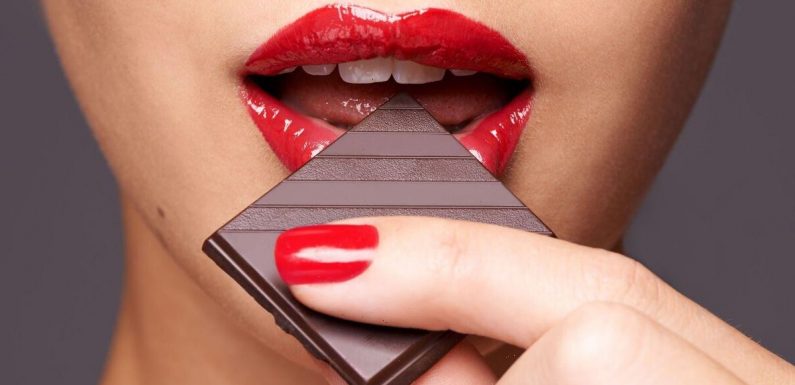
Cadbury: How their classic Dairy Milk chocolate is made
We use your sign-up to provide content in ways you’ve consented to and to improve our understanding of you. This may include adverts from us and 3rd parties based on our understanding. You can unsubscribe at any time. More info
Why does chocolate feel so good? Well, it’s all down to how it’s lubricated by fat and saliva, a team of engineers has revealed. The researchers studied the processes in play when chocolate melts in the mouth, changing from a solid to a smooth, irresistible emulsion. The team found it is the fat on the surface of chocolate — not inside it — that gives it its sublime mouthfeel. Accordingly, it should be possible to make a layered, lower-fat chocolate that tastes just as delicious, they said.
Paper author and food scientist Professor Anwesha Sarkar of the University of Leeds said: “Lubrication science gives mechanistic insights into how food actually feels in the mouth. You can use that knowledge to design food with better taste, texture or health benefits.
“If a chocolate has 5 percent fat or 50 percent fat it will still form droplets in the mouth and that gives you the chocolate sensation.
However, it is the location of the fat in the make-up of the chocolate which matters in each stage of the lubrication, and that has been rarely researched.
“We are showing that the fat layer needs to be on the outer layer of the chocolate — this matters the most — followed by effective coating of the cocoa particles by fat, these help to make chocolate feel so good.”


In their study, Prof. Sarkar and her colleagues did not investigate the question of how chocolate tastes — but instead focussed on its feel and texture.
Their tests of a luxury brand of dark chocolate were undertaken on an “artificial tongue”, using analytical and imaging methods from a field of engineering known as tribology.
Tribology is the science of interacting surfaces in relative motion — and includes the study of both friction and lubrication. When it comes to eating chocolate, tribological analysis considers both the liquids from the chocolate and the saliva produced in the mouth.
According to the researchers, when chocolate comes into contact with the tongue, it releases a fatty film that coats the surface of the mouth, making the treat feel smooth.
After this, it is the release of solid cocoa particles that become important in terms of the chocolate’s tactile sensation — not the fat deeper inside the chocolate.


Leeds oral tribologist Dr Siavash Soltanahmadi is the lead researcher of the new study.
He said: “With the understanding of the physical mechanisms that happen as people eat chocolate, we believe that a next generation of chocolate can be developed that offers the feel and sensation of high-fat chocolate, yet is a healthy choice.
“Out research opens the possibility that manufacturers can intelligently design dark chocolate to reduce the overall fat content.
“We believe dark chocolate can be produced in a gradient-layered architecture with fat covering the surface of chocolates and [cocoa] particles to offer the sought-after self-indulging experience without adding too much fat inside the body of the chocolate.”
DON’T MISS:
NASA telescope finds its first planet bearing similarities to Earth [ANALYSIS]
Supermassive black holes set to collide in closest appraoch ever seen [REPORT]
Minister to unveil science superpower plan today in break from EU [INSIGHT]

According to the business intelligence agency MINTEL, UK chocolate sales are expected to grow by 13 percent by 2027 — reaching a whopping £6.6billion.
The new research into chocolate was funded by the European Research Council via the European Union’s Horizon 2020 research and innovation programme.
According to the team, the principles used in the current study could also be used to investigate other foodstuffs that change phase from a solid to a liquid — including, for example, cheese, ice cream and margarine.
The full findings of the study were published in the journal ACS Applied Materials and Interfaces.
Source: Read Full Article